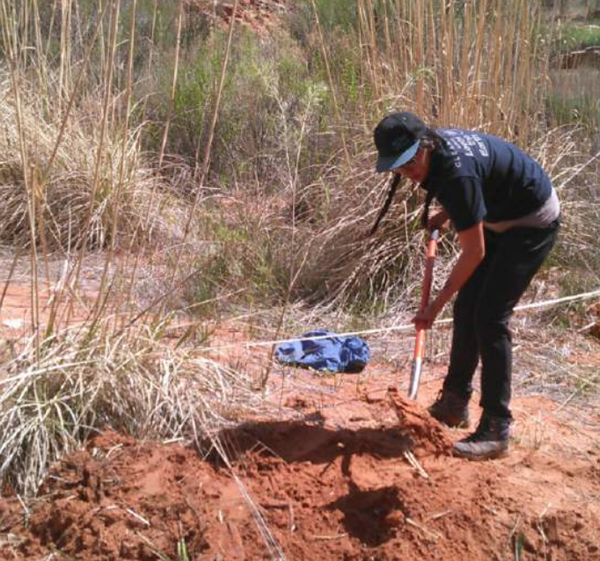News and Highlights
This is a list of past iUTAH EPSCoR news from 2012 to 2018.
November 20, 2017
iUTAH Project Represented at National EPSCoR Conference
More than 300 participants from around the country gathered in Missoula, MT for the 25th National Science Foundation EPSCoR National Conference, Nov. 5-8. EPSCoR stands for Established Program to Stimulate Competitive Research. The conference focused on “what makes EPSCoR unique within the NSF,” emphasizing inclusion & diversity, science & innovation, partnerships, and longitudinal sustainability.
Presenters from the iUTAH project included Andy Leidolf, assistant director and project administrator, and Ellen Eiriksson, education, outreach, and diversity coordinator, along with Caleb Buahin, iUTAH postdoctoral researcher at Utah State University, and Jordan Maxwell, graduate student at Brigham Young University. Jackie Grant, associate professor of biology at Southern Utah University, and Jeannine Huenemann, iUTAH communications specialist, also participated. Andy was part of a panel discussion on Team Science and Community Development, as well as leading a post-conference program administrator’s meeting, where he serves as an officer. Ellen, Caleb, and Jordan presented posters of their iUTAH work.
"This was a well-planned and well-executed conference,” said Leidolf. “The two-and-a-half days were absolutely packed with interesting talks, panels, exercises, and social events, and there was a lot of opportunity for networking and co-creating with participants from other jurisdictions—it will be an effective catalysts for cross-jurisdictional activities long after the meeting.”
Ellen Eiriksson added that she “always appreciates the opportunity to network, share ideas with, and learn from colleagues in other EPSCoR jurisdictions, especially efforts going on in other states, and was glad to present on the iUTAH iFellows Program to the national EPSCoR community.”
EPSCoR is a federal program designed to improve the research capacity of eligible states or regions, making them nationally competitive for future grants. Currently, 25 states, the Commonwealth of Puerto Rico, Guam, and the U.S. Virgin Islands are eligible to compete in various NSF EPSCoR program opportunities. Learn more about NSF EPSCoR.
Utah became eligible as an EPSCoR state in 2009. The iUTAH EPSCoR project is a $24MM multi-institutional effort funded through this program, integrating research, training, education, and outreach for water science across the state. As a state, Utah has “graduated” from EPSCoR, having surpassed the NSF funding level for EPSCoR eligibility. This means that Utah cannot compete for future EPSCoR funding opportunities unless the state qualifies for EPSCoR eligibility again.
In addition to executing a well-organized conference, the Montana NSF EPSCoR project will be making many of the conference presentations and support materials available on the conference website in the weeks to come.

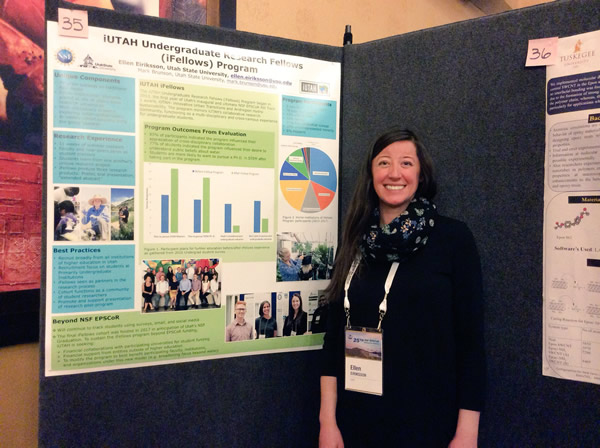
November 20, 2017
Software Helps Scientists See How Nature is Connected
Caleb Buahin, a postdoctoral researcher with the iUTAH project at Utah State University, has developed a flexible software framework called HydroCouple that allows scientists to bring together models from different domains and scientific disciplines. This approach, called component-based modeling, allows for the communication and exchange of information during calculations. It allows scientists to test and refine hypotheses about how water systems behave by experimenting with different models using the same framework.
Caleb’s current work involves coupling together models that simulate the natural and built portions of urban water systems. By working with the City of Logan and using aquatic and climate data from iUTAH’s Gradients Along Mountain to Urban Transitions (GAMUT) network, he is able to examine present and future water capacity related to the cities’ stormwater system. An example output from his work shows the interactions between the canal system and the engineered stormwater infrastructure.
By demonstrating how this framework can be useful for bringing together models and data for different aspects of Utah’s water system, Caleb is creating software tools and guidance that can help other researchers evaluate not just water systems but other natural resource systems. In so doing, scientists will be able to avoid the pitfalls of studying parts of a problem independently, without considering the important ways that different resources affect each other and our future.
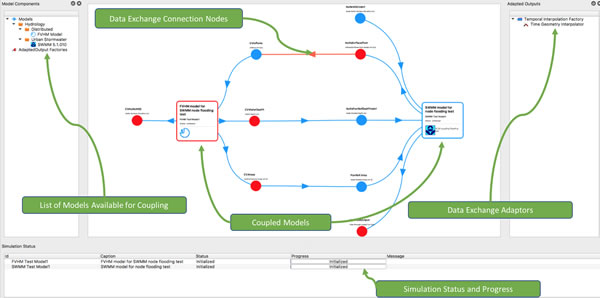
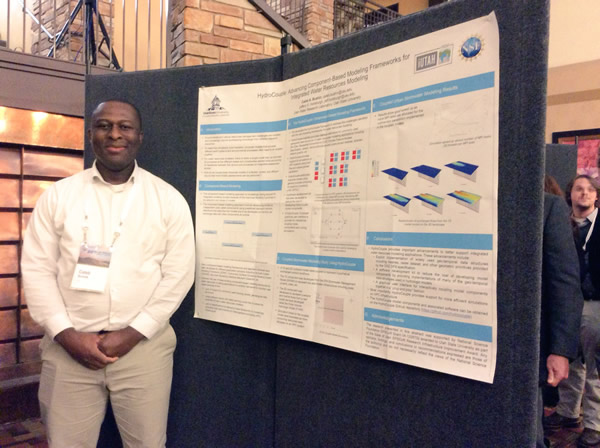
October 26, 2017
Saline Lakes in Dire Situation Worldwide
iUTAH researchers Sarah Null and Maura Hahnenberger, and others have contributed to an article on the “Decline of the world’s saline lakes” published online in the journal Nature Geoscience on October 23, 2017.
An announcement written by Tracy Jones for Utah State Today says that saline lakes, including Utah's Great Salt Lake, are shrinking. While the lake has risen and fallen in recent years, this particular decline represents a drop in water level, exposing more lake bed, and leading to an increase in dust. In addition to the lake’s importance to economy, wildlife, and recreation, the dust caused by this decline is hazardous to human health. Authors of the article, including scientists and water managers, say that additional water resources are needed to bring the lake back to a healthy state.
Wayne Wurtsbaugh, lead author and professor in the Department of Watershed Resources and the Ecology Center at Utah State University says that “the persistence of water diversions has decreased the lake's level about 11 feet and exposed a lot of lake bed. The state's plans to continue developing water in the basin will only worsen the problem."
"The state has had some success in water conservation for households, but since water for agriculture represents over 60% of water use, domestic conservation represents only a minor reduction," says Wurtsbaugh. "Reductions in water use from all sectors will be needed if we are to solve this problem."
Full study of the article is available below:
“Decline of the world’s saline lakes”
Authors: Wayne Wurtsbaugh, Sarah Null, Peter Wilcock and Frank Howe of Utah State University; Craig Miller of the Utah Division of Water Resources, Justin deRose of the U.S. Forest Service, Maura Hahnenberger of Salt Lake Community College, and Johnnie Moore of the University of Montana.
Press: EurekAlert! | Utah State Today | The New York Times | International Business Times | Salt Lake Tribune

October 13, 2017
iUTAH at Salt Lake Co. Watershed Symposium
iUTAH is pleased to again be included in the 2017 line-up of featured speakers at the Salt Lake County Watershed Symposium. Lead researchers from the iUTAH project will present a series of five talks highlighting outcomes and impacts to Utah’s water science in the areas of biophysical systems, human and engineered systems, coupled human-natural systems, as well as cyberinfrastructure, and statewide education, outreach and diversity programs.
The 2017 Salt Lake County Watershed Symposium takes place on November 15-16, at the Utah Cultural Celebration Center, West Valley City UT. Other iUTAH participants will be presenting research over the two-day event which brings together personnel from state, federal, tribal, and municipal governments; the private sector; the public; academia; environmental groups; and local watershed organizations. A complete listing of event schedule and directory can be found here. iUTAH’s team talk is scheduled for Wednesday, Nov. 15 , from 3:10pm - 4:20pm.
Free and open to all, the Watershed Symposium encourages a comprehensive review of the current state of the Salt Lake County watershed, while creating a forum for sharing information among a broad array of stakeholders. Sessions bring individuals from a wide range of backgrounds together, including science, engineering, business, public policy, education, and community groups.
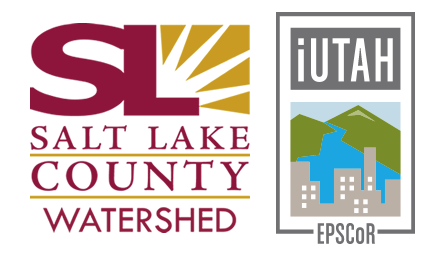
October 11, 2017
Continued $4M Funding for HydroShare
Utah State University recently announced that David Tarboton would lead a $4 million National Science Foundation-funded collaborative effort aimed at improving HydroShare – an online database system that simplifies the storage and sharing of hydrological data and models.
An excerpt from a USU press release said “'Hydroshare is an online system for the scientific community that allows us to easily and freely share products from our research,’ said Tarboton, a professor of civil and environmental engineering and a leading hydrology expert who helped create HydroShare. ‘We’re interested in sharing not just the scientific publication summarizing a study, but also the data and models used to create that study.’
Tarboton says sharing scientific data helps researchers collaborate and improves the quality of data and scientific knowledge. Enhancing HydroShare’s capabilities, he added, will help hydrologists and a broad community of earth-science researchers transform data sharing techniques and accelerate the pace of discovery. Improvements to HydroShare include enhancements to data sharing tools, and new features that enable its 1,000-plus users to develop their own unique apps to access HydroShare resources.
‘HydroShare represents the latest thinking in collaborative hydrology research,’ said Tarboton. ‘This program and its improved capabilities will serve a diverse community of researchers ranging from hydrologists and environmental engineers to aquatic ecologists.’”
iUTAH is using the Consortium of Universities for the Advancement of Hydrologic Science, Inc. (CUAHSI) HydroShare system as a data repository. Its development included input and leadership from USU researchers Jeff Horsburgh and Amber Jones and other iUTAH participants and partners. Since iUTAH contributed a significant number of datasets to HydroShare, the needs of participants have helped motivate development of features and functionality that will continue to address long-term needs after the iUTAH project ends.
Press: EurekAlert! | The Herald Journal | University Corporation for Atmospheric Research | Utah State Today
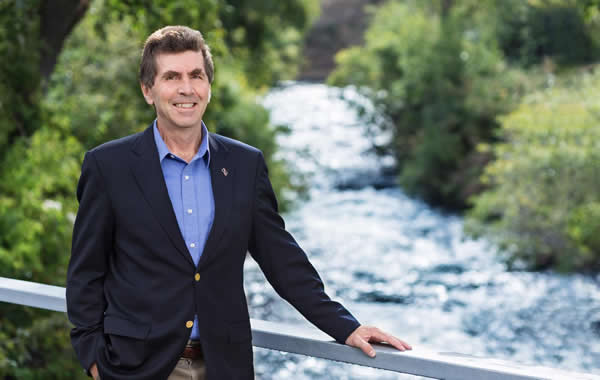
October 11, 2017
iUTAH Researcher Returns to Her Roots
Ka-Voka Jackson, a former iUTAH traineeship participant, has been in the news recently for her research on invasive grass in Glen Canyon. Jackson is leading a team of researchers in a project to learn how best to eradicate invasive ravenna grass from Lake Powell's side canyons and replant with native species. She is a University of Nevada, Las Vegas graduate student in ecology and evolutionary biology, and member of the Hualapai tribe. Here is what reporter Paige Blankenbuehler had to say about Jackson in an a High Country News article dated Sept. 6, 2017:
“With the Southwest’s climate on a trajectory for prolonged drought and weather extremes, Jackson navigates the deep backcountry near Glen Canyon, around the Arizona-Utah border. Here, back home, she is working to eradicate prolific and climate-change-resistant invasives and restore native vegetation….
As part of her graduate research, in collaboration with the National Park Service and Glen Canyon National Recreation Area, Jackson is now assessing dozens of plots, 100 square meters each, in five different canyons. …In April, she took a team of technicians into the canyons to kill or pull up ravennagrass and replant native plants. Jackson is also investigating whether passive re-vegetation — allowing the native plants to come back on their own — can work. Over the course of her program, she will return to monitor her plots, recording details from each to give land managers insight into which methods could work best for Glen Canyon National Recreation Area.”
Jackson is a graduate of the University of Utah, and has a Bachelor of Science in biology with an organismal and environmental emphasis. During her time with iUTAH, she was in the iUTAH Traineeship program and worked directly with the Red Butte Creek GAMUT technicians on their research, as well as other research scientists and graduate students.
Press: High Country News | Nevada Public Radio | Salt Lake Tribune | Utah Public Radio | KJZZ Radio
